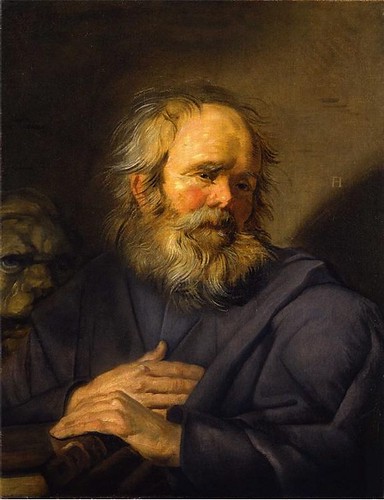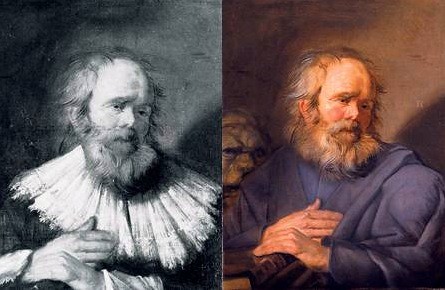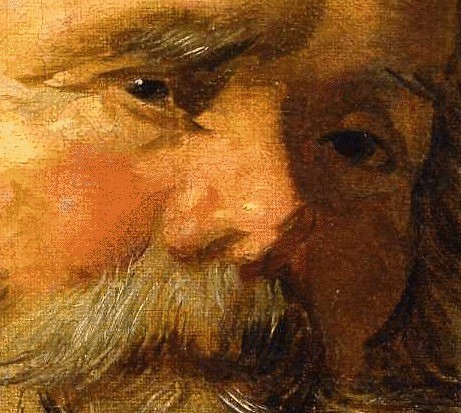
Most of the people who read this blog have a positive opinion of nineteenth-century art culture. They might be surprised to know that, in many cases, the nineteenth century was not kind to Old Master paintings. It was common for collectors to “improve” paintings by hiring painters to update or adjust them. Many paintings didn’t survive the century and others were transformed.

That was the case with St. Mark by Frans Hals (Flemish, 1580-1666), which is currently on sale and view at the Barnheimer Fine Old Master Gallery in Munich. (Asking price is $7.7 million.) In 1972, the painting failed to sale at a Christie’s auction were it was atributed to Luca Giorando (a bizarre assumption). In 1973, the painting was sent to a restorer, who removed a small patch of paint and discovered Hals’ signature. It was a surprise because Hals, who is best known for his portraits, rarely painted religious scenes.

Sometime in the nineteenth century, a collector thought the painting would be better were it to look more like other Hals’ portraits. Thus, a painter was hired to add lace collars and cuffs, which covered the apostolic robes and the lion, a traditional symbol for St. Mark.
Great post! I am knocked sideways that a latecomer/forger painted a lace collar on a Hals — his lace is so distinctive, painted in ruffled cascading sheets, almost in a Wayne Thiebaud-style shorthand, but with rather heavy paint, as you would expect from the way he painted faces. I’d be very impressed with a forger who got that right.